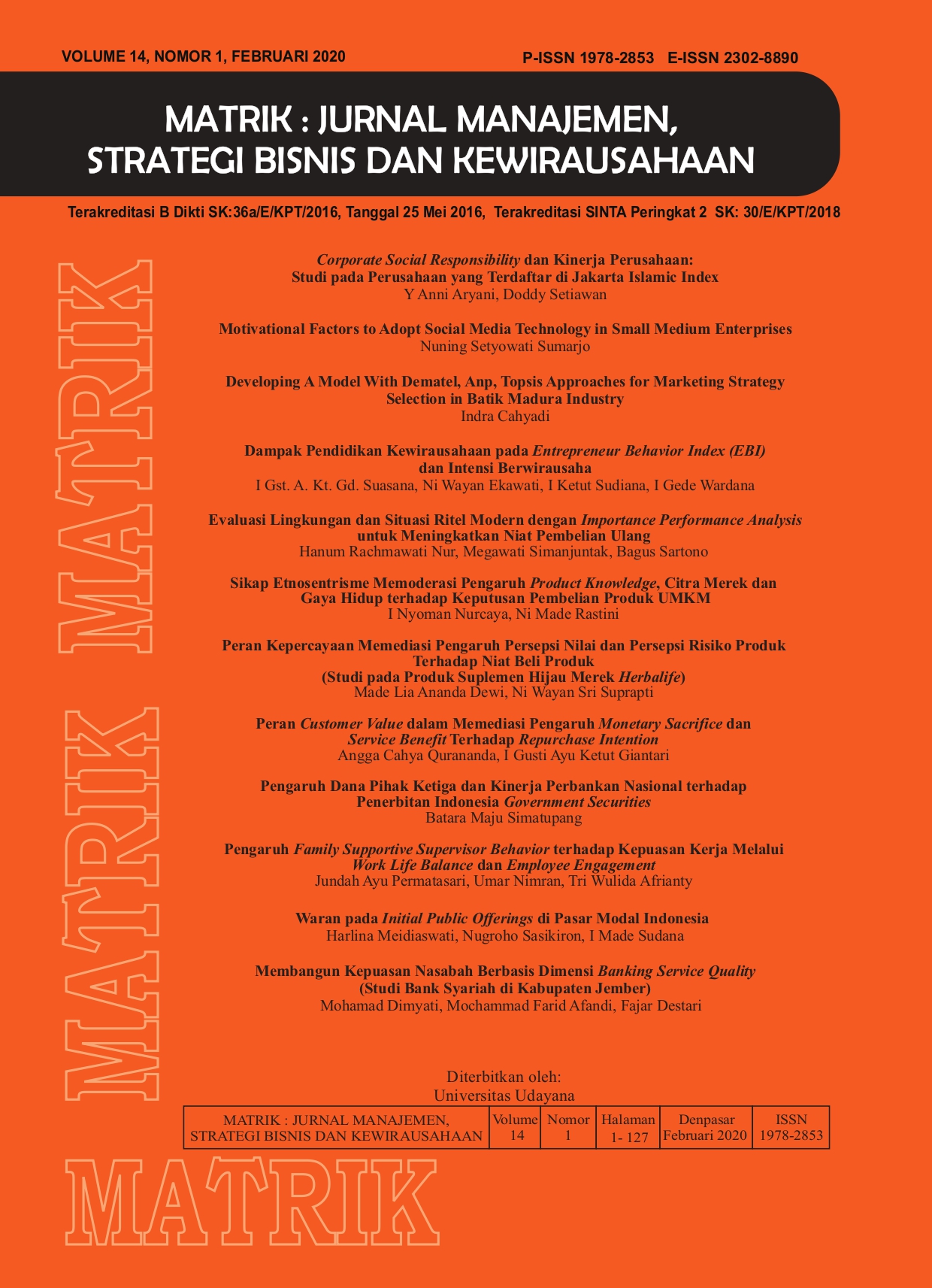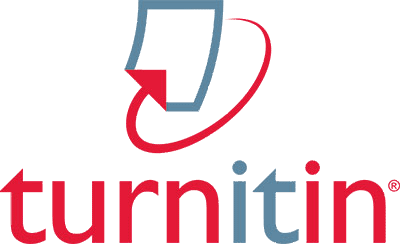EnglishDeveloping A Model with Dematel, Anp, Topsis Approaches for Marketing Strategy Selection in Batik Madura Industry
Abstrak
Pemilihan strategi pemasaran sangat penting untuk keberlanjutan usaha kecil dan menengah (UKM). Memilih strategi pemasaran terbaik adalah masalah yang melibatkan proses pengambilan keputusan multi kriteria, yang mempertimbangkan banyak atribut dalam berbagai fase metode perumusan strategi. Makalah ini mengusulkan model untuk memilih strategi pemasaran di UKM Batik Madura. Model dalam penelitian ini memilih lima kriteria termasuk jaringan pelanggan, kemampuan inovasi, kompetensi manajerial, modal manusia, dan reputasi perusahaan berdasarkan hasil tinjauan pustaka dan diskusi pengambilan keputusan kelompok fokus. Hasil dari proses jaringan analitik (ANP), percobaan pengambilan keputusan dan evaluasi laboratorium (DEMATEL) dan Teknik untuk preferensi pesanan dengan kemiripan dengan metode solusi ideal (TOPSIS) diterapkan untuk memperoleh peta hubungan dampak dari setiap kriteria dan untuk menentukan prioritas strategi pemasaran. Implementasi model menunjukkan bahwa UKM Batik Madura harus mempertahankan fokus mereka pada pemasaran segmentasi sebagai strategi pemasaran yang paling tepat.
##plugins.generic.usageStats.downloads##
Referensi
Danis W.M., Chiaburu D.S. and Lyles M.A. 2010. The Impact of Managerial Networking Intensity And Market-based Strategies on Firm Growth during Institutional Upheaval : A Study of Small and Medium-sized Enterprises in a Transition Economy. Journal of International Business Studies, (41) : 287–307.
De Jong J.P.J. and Hulsink W. 2012. Patterns of Innovating Networking in Small Firms. European Journal of Innovation Management, (15) 3 : 280–297.
Ernst H., Wayne D. H. and Carsten R. 2010. Sales, Marketing, and Research-and-Development Cooperation Across New Product Development Stages : Implications for Success. Journal of Marketing, (74) 5: 80-92.
Fontela E. and Gabus A. 1974. DEMATEL : Innovative Methods, Report no. 2, Structural Analysis of the World Problematique. Battelle Geneva Research Institute.
Halim H.A., Ahmad N.H., Ramayah T. and Hanifah H. 2014. The Growth of Innovative Performance
among SMEs : Leveraging on Organisational Culture and Innovative Human Capital. Journal
of Small Business and Entrepreneurship Development, (2) 1: 107-125.
Hooley G.J., Greenley G.E., Cadogan J.W. and
Fahny J. 2005. The Performance Impact of
Marketing Resources. Journal of Business
Research, (58) 1: 18-27.
Hwang C. L. and Yoon K. 1981. Multiple Attribute
Decision Making – Methods and Applications:
A State of the Art Survey, Springer Verlag.
Kazlauskaitë R., Autio E., Gelbûda M. and
Ðarapovas T. 2015. The Resource-based View
and SME Internationalisation : An Emerging
Economy Perspective. Resource, (3) 2.
Lin C.T., Lee C., Wu C.S. 2009. Optimizing a
Marketing Expert Decision Process for the
Private Hot el. Expert Syst ems with
Applications, (36) 3 : 5613–5619.
Lo, W.S., and Hong, T.P. A three-level multiple-agent
early warning mechanism for preventing loss
of customer s in fashion supply chain
management, Industry and Business Analysis,
IGI Global, 2012 pp. 173-184.
Marek P. 2014. A Critical Analysis of the Concept
of Marketing Strategies for Small and Midsized
Companies. Economics : Management
and Financial Markets, (9) 4: 255.
Mohaghar A., Fathi M. R., Sasani A. and Khanmohammadi
E. 2012. Integration of Linear Goal
Programming and Fuzzy VIKOR Method for
Marketing Strategy Selection : A Case Study.
Journal of American Science, (8) 6: 827-834.
O’Cass A. and Ngo L. 2012. Creating Superior Customer
Value for B2B Firms through Supplier Firm
Capabilities. Industrial Marketing Management, (41)
: 125–135.
Saaty T.L. 1996. Decision Making with Dependence
and Feedback : Analytic Network Process.
RWS Publications, Pittsburgh.
Saaty T.L. and Vargas L.G. 1996. Diagnosis with
Dependent Symptoms : Bayes Theorem and
The Analytic Hierarchy Process. Operations
Research, (46) 4 : 491-502.
Sengupta A., Venkatesh D.N. and Sinha A. 2013.
Developing Performance-linked Competency
Model : A Tool for Competitive Advantage.
International Journal of Organizational
Analysis, (21) 4: 504-527.
Soekesi A.E.M. 2013. Karakteristik UKM Batik Pada
Klaster Batik Di Jawa Tengah. Seri Kajian
Ilmiah, (15) 1: 63-70.
Sok P. and O’Cass A. 2011. Achieving Superior
Innovation-based Performance Outcomes in
SMEs through Innovation Resource-Capability
Comp lementarity. Industria l Marketing
Management, (40) 8 : 1285-1293.
Suliyanto, Wulandari S.Z. and Novandari W. 2010.
Competitive Strategy Model for Purbalingga
Batik. Economic Journal of Emerging Markets,
(2) 2 : 169-185.
Van den Bult e C. 2010. Oppor tunities and
Challenges in Studying Customer Networks.
London, Routledge.
Wu C.S., Lin C.T. and Lee C. 2010. Optimal
Marketing Strategy: A Decision-Making with
ANP and TOPSIS. International Journal of
Production Economics, (127) 1 :10190-196.
 This work is licensed under a Creative Commons Attribution-ShareAlike 4.0 International License.
This work is licensed under a Creative Commons Attribution-ShareAlike 4.0 International License.


















